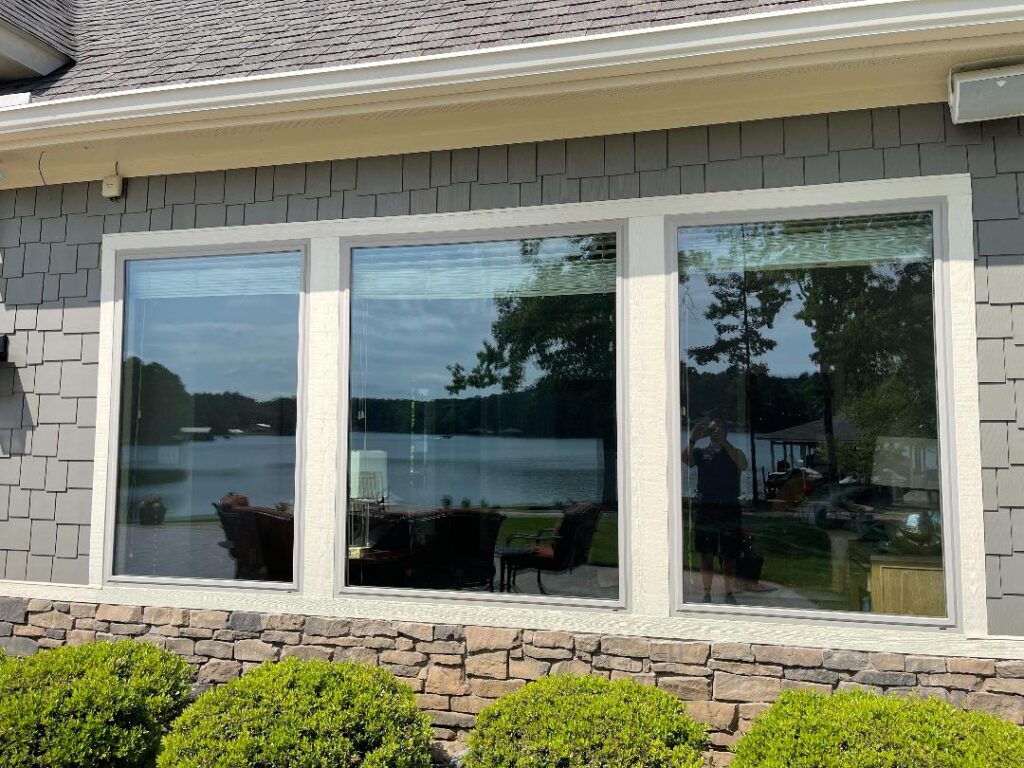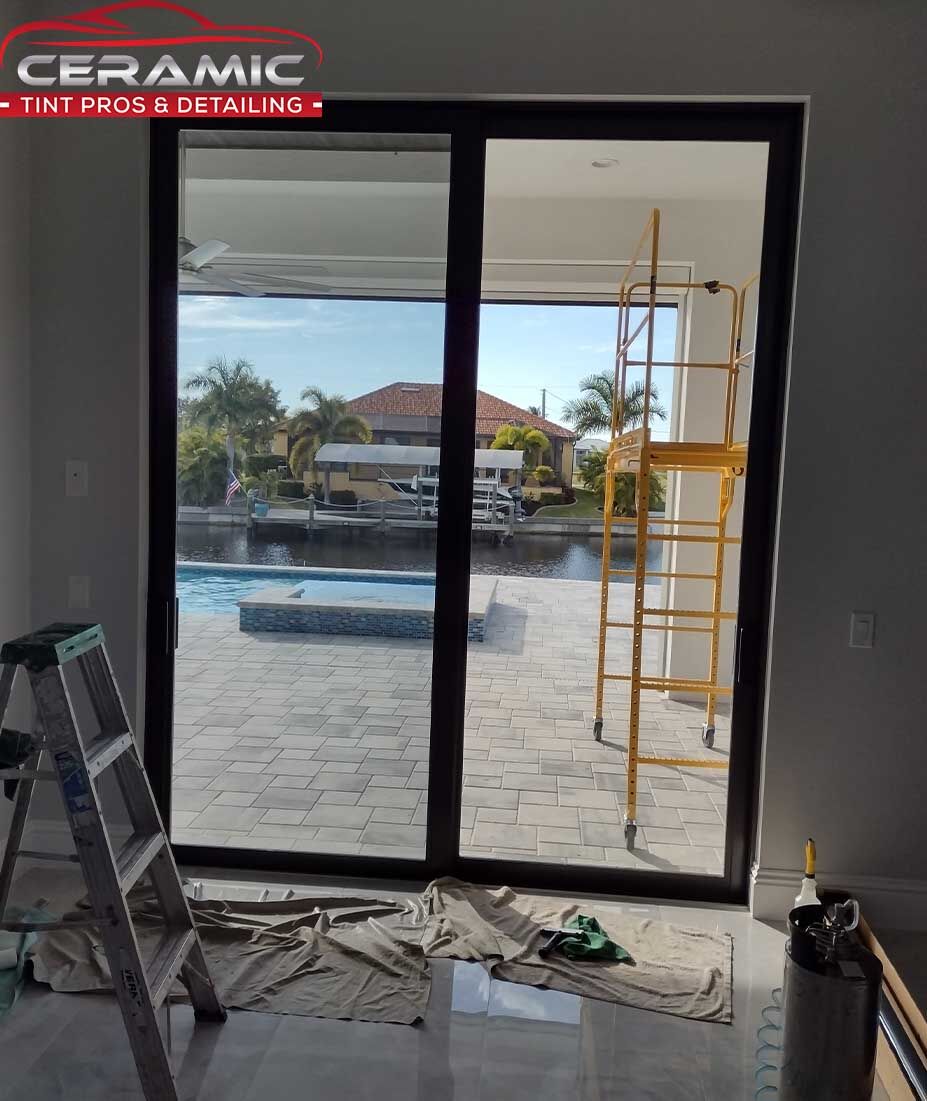Discover the Long-Term Conveniences of Residential Window Tint for Your Home
Discover the Long-Term Conveniences of Residential Window Tint for Your Home
Blog Article
Exactly How Residential Window Tinting Enhances Your Home's Energy Effectiveness
Residential home window tinting offers an engaging solution for house owners seeking to boost power effectiveness within their space. By using specialized movies to windows, it successfully decreases warm transfer, thus stabilizing indoor temperatures and decreasing the demand for excessive home heating or cooling. This not only cuts power intake however additionally provides a much more comfortable environment by reducing glare. Understanding the subtleties of exactly how tinting works and picking the proper type for your home can be critical. Curiously, what aspects should one consider prior to making this financial investment?
Comprehending Window Tinting
Understanding home window tinting is essential for house owners seeking to improve both convenience and energy performance in their living areas. Residential Window Tint. Window tinting involves the application of a thin movie to the inside or exterior surface of glass home windows. This movie can considerably modulate the quantity of sunshine and warmth that goes into a home, therefore influencing interior environment problems
There are various kinds of window tinting films readily available, each with distinctive residential or commercial properties. The effectiveness of home window tinting is typically measured by its Visible Light Transmission (VLT) percent, which shows how much light can pass via the movie.
Benefits of Power Efficiency
Window tinting not only boosts aesthetics but also plays a considerable role in boosting energy efficiency within household spaces. By decreasing heat transfer via windows, colored films produce a much more stable interior environment, which can result in substantial reductions in power usage for home heating and cooling. This power efficiency translates right into lower utility costs, offering home owners with significant long-lasting financial savings.

In addition, home window tinting improves the comfort of living rooms. By decreasing glow and blocking hazardous UV rays, colored home windows create an even more enjoyable environment, which can bring about enhanced well-being for owners. The defense versus UV rays also aids maintain furniture and flooring from fading, contributing to the long life of home things.
Exactly How Tinting Functions
Tinting movies operate via a mix of sophisticated products and innovations made to control the quantity of solar power entering a home. Mainly made up of polyester, these movies typically incorporate metallic or ceramic fragments that take in and mirror warmth. This double capability allows them to significantly minimize the infiltration of ultraviolet (UV) rays and infrared radiation while allowing visible light to pass through.
The efficiency of window tinting is measured by its solar warm gain coefficient (SHGC), which suggests just how much solar energy is sent via the window. Reduced SHGC values are better as they represent better warmth denial. In addition, home window colors can feature a variety of shades, enabling homeowners to customize their aesthetic preferences while improving power performance.
In addition, these films function as a barrier, preventing heat loss during chillier months by showing indoor heat back into the living area. This thermal insulation result matches the air conditioning benefits obtained throughout warmer months, adding to a balanced interior climate year-round. By taking care of solar power effectively, residential home see this here window tinting not only improves convenience yet likewise plays an essential role in minimizing power intake and lowering energy costs.
Choosing the Right Tint

There are various types of window films readily available, including colored, metalized, and ceramic. Ceramic films supply excellent heat control without endangering presence and are highly long lasting, making them a preferred choice.
Visible light transmission (VLT) is an additional important aspect, as it shows the quantity of natural light that can go through the colored glass. House owners need to choose a color with a VLT that enhances their lights choices while still providing adequate glare reduction.
Additionally, evaluating the solar warm gain coefficient (SHGC) can help determine how well a tint can obstruct heat from sunlight. A reduced SHGC indicates better warmth control, ultimately improving energy efficiency.
Installation and Upkeep Tips
Appropriate setup and upkeep are important components in maximizing the advantages of domestic home window tinting. To achieve optimum outcomes, it is suggested to employ a certified professional for setup. This ensures that the color is applied appropriately, staying clear of air bubbles, creases, or imbalance that might compromise performance. Specialists likewise use specialized techniques and tools, which can improve the longevity and performance of the tint.
Complying with installation, maintenance is crucial to prolong the life of the home window film. It is advised to wait at the very least 30 days before cleaning up the tinted windows to permit the sticky to heal totally.
Additionally, regular evaluations are useful. Examine for any type of peeling or bubbling, which might indicate improper installation or put on in time - Residential Window Tint. Dealing with these concerns quickly can prevent additional damage and preserve energy efficiency. By adhering to these setup and upkeep pointers, home owners can guarantee their window tinting proceeds to offer significant power financial savings and convenience for years to come.
Final Thought
In final thought, domestic window tinting offers as an effective option for improving power efficiency within homes. By lowering warm transfer and blocking dangerous UV rays, home window films add to lower power intake and boosted indoor convenience.
Home window tinting involves the application of a slim film to the interior or look here outside surface of glass windows. By minimizing warm transfer with home windows, colored films create a more secure indoor climate, which can lead to substantial reductions in power consumption for home heating and cooling.The performance of window tinting is measured by its solar warmth gain coefficient (SHGC), which shows just how much solar power is transmitted through the window. By taking care of solar power effectively, domestic window tinting not just enhances convenience but likewise plays you can check here a crucial duty in lowering power usage and reducing energy expenses.
By reducing warmth transfer and obstructing harmful UV rays, home window movies contribute to lower power usage and improved indoor comfort.
Report this page